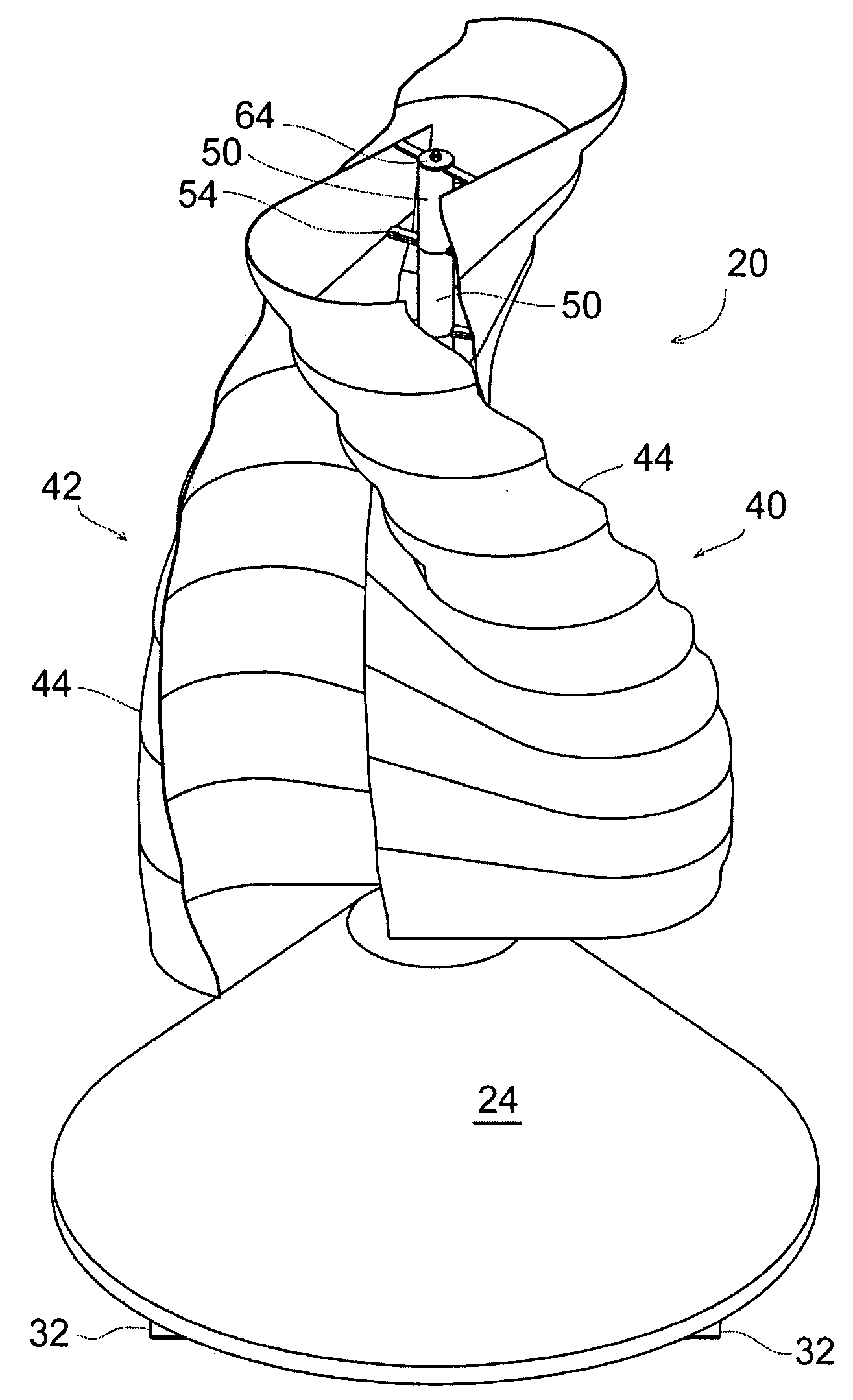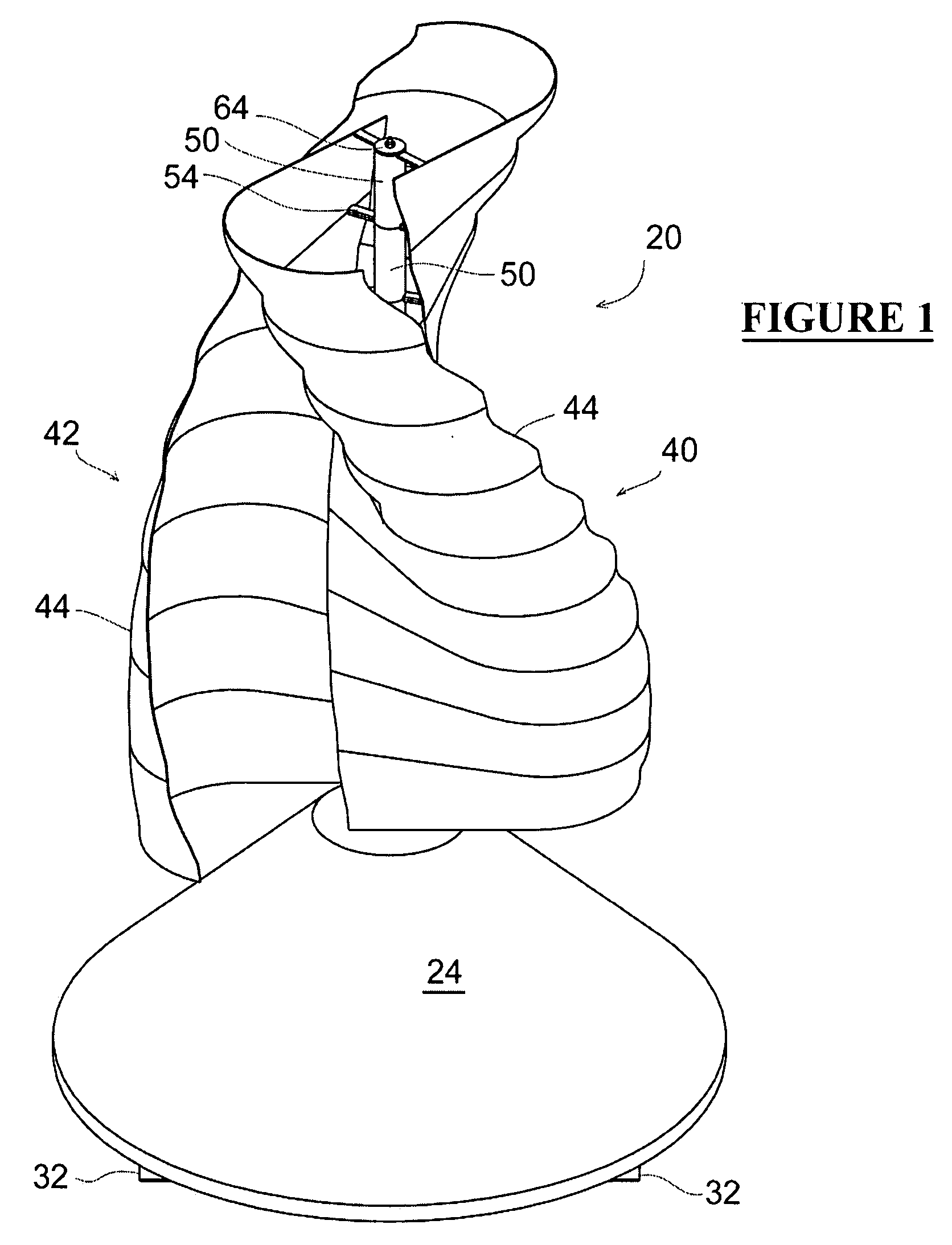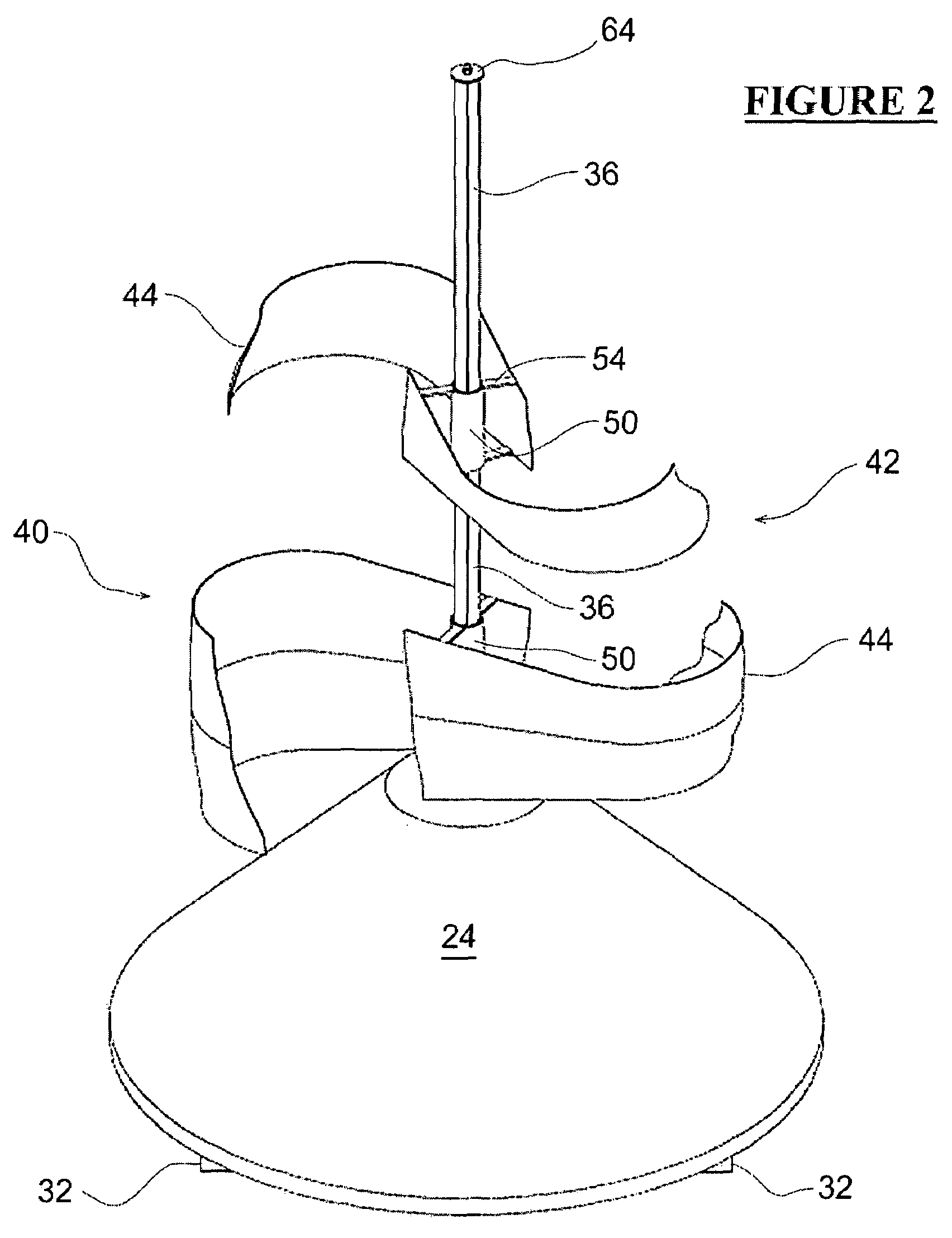Wind-driven electricity generation device with savonius rotor
a wind-driven, electricity generation technology, applied in the direction of electric generator control, renewable energy generation, greenhouse gas reduction, etc., can solve the problems of large unitary blade pair, heavy weight and unwieldy handling and installation, and limited use of drag-type rotors by few people. achieve the effect of convenient completion
- Summary
- Abstract
- Description
- Claims
- Application Information
AI Technical Summary
Benefits of technology
Problems solved by technology
Method used
Image
Examples
Embodiment Construction
[0020]The invention will be best understood by reference to the drawings, particularly FIGS. 1, 2 and 8. In the embodiment illustrated the device 20 has a base 22 which for appearance may be covered by a cone shaped skirt 24. Included in the base 22 structure are shaft bearings 26 and 28. Supporting struts 30 are disposed radially around the base 22, are attached thereto at their top ends, and extend diagonally downward. While for clarity only two of the of the supporting struts 30 are shown in FIG. 8, it will be evident that full support of the device will require at least three such struts and preferably four to eight struts. Normally the struts will be disposed equally spaced around the base 22 of the device, although unequal spacing may be desirable if the device is to be installed on particularly uneven ground. The struts 30 will be attached at their lower ends to ground contact structure 32 which may be in the form of a circular or polygonal flat panel or may be made up of rad...
PUM
| Property | Measurement | Unit |
|---|---|---|
| Angle | aaaaa | aaaaa |
| Height | aaaaa | aaaaa |
| Height | aaaaa | aaaaa |
Abstract
Description
Claims
Application Information
 Login to View More
Login to View More - R&D
- Intellectual Property
- Life Sciences
- Materials
- Tech Scout
- Unparalleled Data Quality
- Higher Quality Content
- 60% Fewer Hallucinations
Browse by: Latest US Patents, China's latest patents, Technical Efficacy Thesaurus, Application Domain, Technology Topic, Popular Technical Reports.
© 2025 PatSnap. All rights reserved.Legal|Privacy policy|Modern Slavery Act Transparency Statement|Sitemap|About US| Contact US: help@patsnap.com



